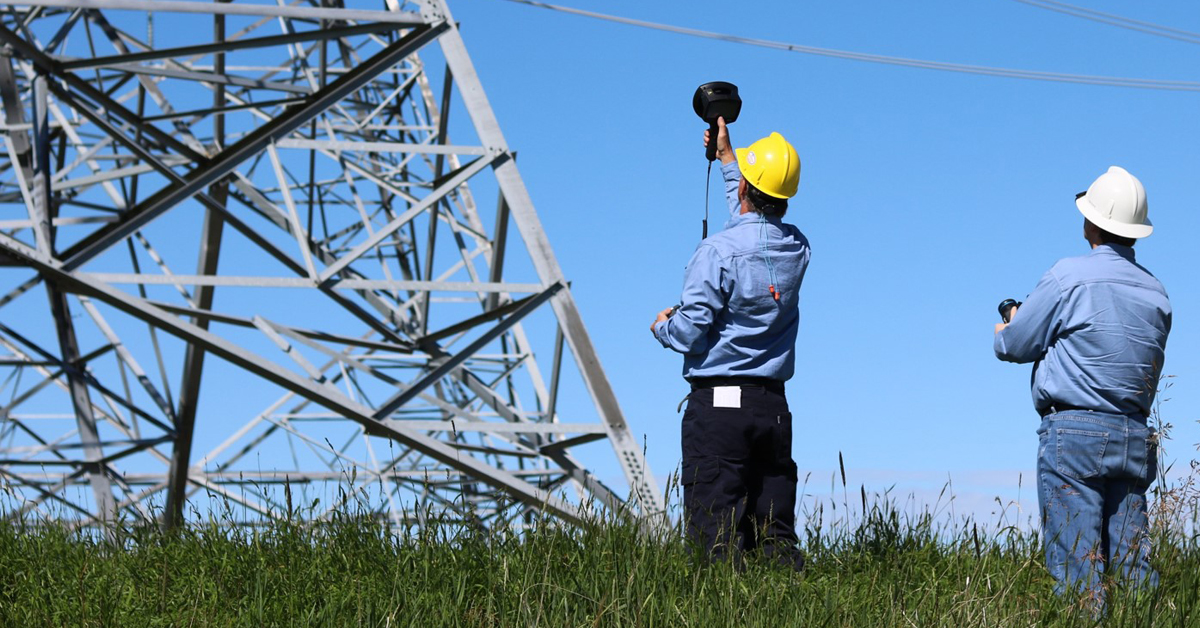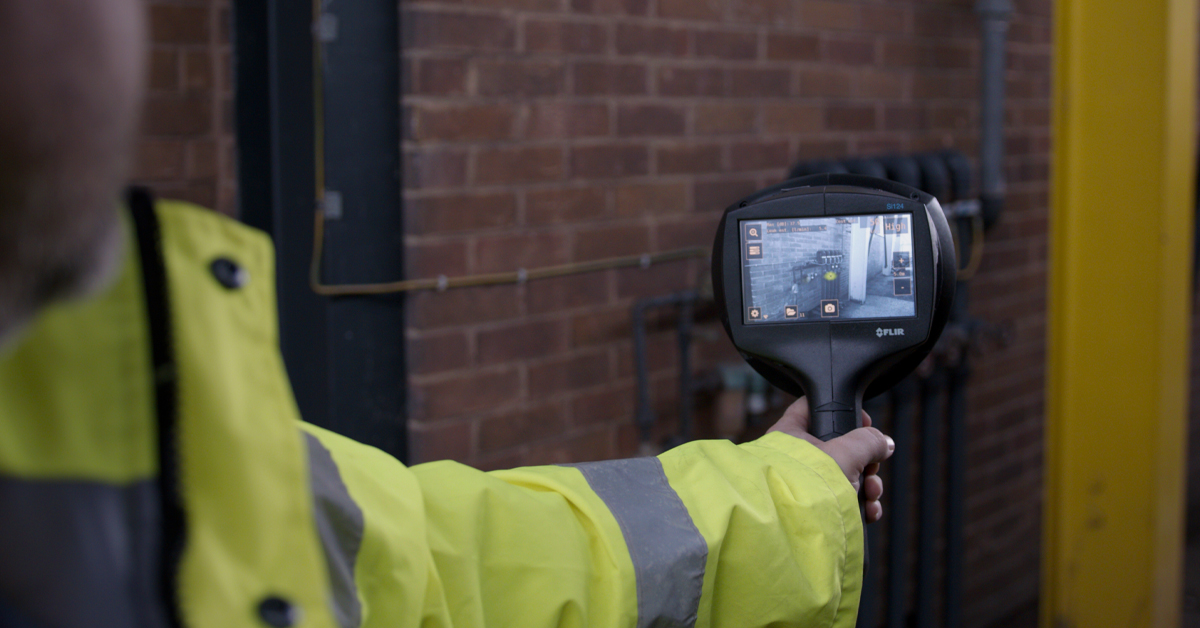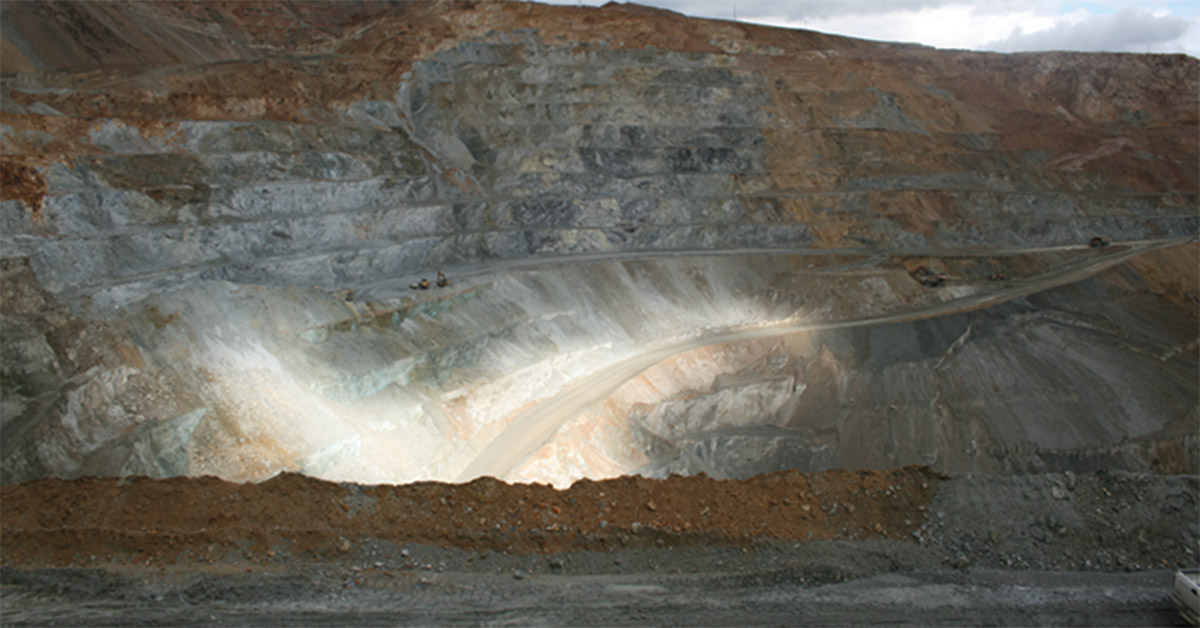Mining Operations: How Acoustic Imaging Cameras Help Detect Compressed Air Leaks

The mining industry plays a vital role in extracting valuable resources from both the surface and subterranean layers of the Earth. Mining operations require robust and dependable equipment to ensure the safe and accurate extraction of minerals and metals.
Amongst the crucial equipment in this industry are air compressors, which have become a fundamental component in every stage of the mining process including powering various drilling methods, providing ventilation, and operating a multitude of tools in both underground and open pit mines. However, compressed air systems often face challenges, such as leaks, that lead to increased energy costs and reduced equipment efficiency, affecting overall productivity and safety. One of the most effective ways to detect compressed air leaks in mining operations is through the use of acoustic imaging cameras.
Table of Contents
-
- The Importance of Compressed Air Systems in the Mining Industry
- The Importance of Detecting Compressed Air Leaks in the Mining Industry
- The Importance of Acoustic Imaging Cameras for Detecting Compressed Air Leaks in Mining Operations
- Eight Benefits of Using an Acoustic Imaging Camera for Air Leak Detection in the Mining Industry
- Frequently Asked Questions
The Importance of Compressed Air Systems in the Mining Industry

Air compressors are an essential component of the entire mining process, with compressed air being widely used and assisting at every level of the process. The mining industry has identified many uses for air compressors, which have made mining safer and more efficient.
Compressed air is a preferred method for mining due to its adaptable and convenient nature. Air compressors perform well in various mining processes and can withstand the harsh wear and tear of mining. They are consistent, efficient, and have relatively low part replacement costs.
The Role of Compressed Air in Mining Operations

The mining industry extensively uses air compressors for powering equipment, delivering clean air, and providing ventilation to create safer and more efficient processes. Compressed air supports various functions in mining operations, including:
Blasting
Controlled explosives are used in the mining industry to break up rocks and other durable materials. Compressed air provides high-velocity streams to help set off explosives safely.
Cleaning
Compressed air is an effective way to remove particles from filters, keeping unwanted particulates out. As a clean source of air, compressed air can help keep equipment and materials free from dirt and debris. This can improve efficiency, reduce downtime, and keep everything in top condition for longer.
Drilling
Compressed air is used to power a rotating drill bit, penetrating the firm ground and providing access to its minerals.
Handling Material
Some materials, such as coal dust, are more manageable when mixed with compressed air through fluidization. It can also convey mining material for more effortless movement.
Instruments and Tools
Mining operations rely on pneumatic tools that need dry, clean air to function correctly. Air compressors deliver this air to mining tools and devices, allowing them to work without electricity. Compressors can power wrenches, hack saws, and drills for consistent, safe underground mining.
Methane Gas Extraction
Methane gas build-up in a mine can be lethal, increasing the risk of static sparks and breathing problems. With proper construction and safety design, air compressors can use vacuum pumps and blowers to help extract methane gas.
Smelting and Refining
Smelting and refining heat and extract metal from ores to get the most usable metals out of the raw materials. Smelting and processing plants nearby the mining operation will use air compressors throughout this process. Additionally, the refining process uses compressed air to reduce material waste by oxidizing unwanted elements.
Spargers
Compressed air is introduced to tanks through spargers, which are pipes located at the bottom of the tanks. With small pores, the pipes distribute bubbles evenly throughout the tank.
Ventilation Systems
Miners require sufficient amounts of safe, breathable air while working underground. Compressed air can supply them with ventilation deep underground so they can breathe. In case of emergencies, compressors also bring clean, safe air into refuge bays, so miners can seek breathable shelter.
Drilling Methods in Underground and Open Cast Mines

Underground Mining employs a variety of drilling methods, including Top-Hammer, DTH (or ITH), and simpler equipment like jackleg drills, depending on the application, hole size, and available space and equipment. DTH or ITH drilling is typically used for larger diameters and longer holes, such as for blasting and cutting holes or service holes like ventilation or drain holes that require significantly more compressed air.
Open Cast Mines, also known as Open Pit Mines and Quarries, rely on rock drilling for the production of metallic and non-metallic minerals and construction materials. The size of the mine and production volume determine the hole pattern with specified diameters and depths that must be drilled and blasted to prepare the rock for crushing. Top-Hammer rigs are typically used for smaller hole sizes (below 3.5”) and lower depths, while DTH (or ITH) drilling is best suited for medium-size holes (3.5” to 8”), and larger diameters are drilled with rotary drill rigs.
Drilling productivity is heavily reliant on the compressed air system, which provides flushing for all three methods, as well as hammer operation in DTH Drilling. Optimum upward air velocity in the annulus around the drill rods is critical to ensure the crushed cuttings can be removed from the hole at their largest size, resulting in faster penetration rates and longer drill bit life. Additionally, air pressure plays a vital role in DTH hammer operation and penetration rate, which accounts for the largest portion of total drilling costs in Open Pit Mining.
The Importance of Detecting Compressed Air Leaks in the Mining Industry

Distribution station with valves for compressed air in mine
Compressed air systems are prone to leaks, which can increase energy costs by causing the compressor to work harder. Leaks tend to occur in joints and weak points and cause fluctuations in pressure levels. This can reduce the efficiency of air-operated tools and increase the time required to complete work. Leaks also increase the runtime and unnecessary cycling of the compressor, which shortens equipment service life and drives up maintenance costs.
The Costs of Compressed Air Leaks in Mining Operations
Compressed air systems typically lose 25-30% of their air to leaks. That means:
- 25-30% higher energy costs
- Cost to purchase of extra compressors equipment to meet compressed air tooling requirements
- Compressor lifetime reduced by 30%, meaning 30% higher replacement costs
- Extra maintenance cost for extra equipment
How Much Are Compressed Air Leaks Costing Your Mining Facility?

So, how does that translate into real-world financial implications? The financial burden of compressed air leaks in mining operations can vary from $720 to $55,333 annually, depending on the size of the leak and the total pressure per square inch gauge (psig).
Plant Service Magazine calculates the cost of compressed air leaks based on their combined magnitude. Considering continuous operation throughout the day and a rate of 8 cents per kilowatt-hour (kWh), an inadequately maintained compressed air system could incur annual expenses amounting to tens of thousands of dollars for a mining operation.
The Importance of Acoustic Imaging Cameras for Detecting Compressed Air Leaks in Mining Operations
FLIR Si124 Acoustic Imaging Camera
Acoustic imaging cameras have become a valuable and efficient resource for detecting compressed air leaks in mining operations. These cameras offer the advantage of swiftly and precisely pinpointing the origin of a leak, requiring minimal training from operators, even in environments with high levels of noise and complexity. As a result, mines can promptly take corrective measures to decrease energy wastage, mitigate safety risks, and optimize the performance of their equipment.
Locating Compressed Air Leaks in Mining Operations Using an Acoustic Imaging Camera

To meet the mining industry's challenges, mining companies can turn to technology, with a particular emphasis on condition monitoring. The FLIR Si124 acoustic imaging camera offers a powerful solution for condition monitoring in mining and is specifically designed to discover compressed air leaks as well as partial discharges such as corona and arcing in medium and high voltage electrical systems.
Built with 124 microphones, the FLIR Si124 can detect and pinpoint even very quiet noises from a long distance, making it ideal for the harsh environment of mining operations. The FLIR Si124's sensitive microphones are also advantageous when inspecting high voltage systems, which requires a safe distance from the energized equipment.

FLIR Si124 acoustic imaging camera detecting a compressed air leak
The addition of FLIR Thermal Studio Suite desktop software offers an added advantage by integrating thermal and acoustic imaging in a single report. This dual functionality enhances maintenance decision-making while eliminating the need to learn multiple software platforms.
The complimentary FLIR Acoustic Camera Viewer is a web-based reporting software that enables rapid image uploads via Wi-Fi for immediate analysis. This service provides users with valuable insights, such as the waveform and energy costs of compressed air leaks and the classification, severity assessment, and recommended corrective actions for partial discharges.

FLIR Si-Series Plugin for FLIR Thermal Studio
The FLIR Si124 acoustic imaging camera improves the operational continuity of mining facilities. The camera detects compressed air leaks early on, reducing energy waste and financial losses. It also helps to prevent unplanned downtime caused by high voltage component failure and helps to ensure there is a consistent and uninterrupted energy supply that is needed for mining extraction and production.
The camera requires minimal training and is easy to incorporate into the maintenance cycle of mining facilities, even in the noisiest areas.
The Advantages of Using Acoustic Imaging Cameras in Mining Operations
Enhanced Energy Efficiency
In the mining industry, compressed air leaks can contribute significantly to energy wastage. However, by employing acoustic imaging cameras to promptly detect and address leaks, mining operations can enhance their energy efficiency and decrease overall energy consumption. This, in turn, leads to reduced operational expenses and a diminished environmental impact.
Heightened Productivity
Compressed air leaks can adversely affect the productivity of mining operations, impeding the efficiency of pneumatic equipment. By swiftly identifying and repairing such leaks, mining companies can optimize equipment performance and enhance overall productivity.
Cost Savings
The FLIR Si124 acoustic imaging camera can help ensure a consistent and uninterrupted energy supply vital for mining extraction and production. The FLIR Si124 can also help save mining operations money. To estimate the potential energy a plant could save from detecting and repairing air leaks, in relation to the cost of the camera itself, the Si124-LD ROI Calculator can be used.
Eight Benefits of Using an Acoustic Imaging Camera for Condition Monitoring in the Mining Industry
- Reduces energy waste and financial losses by locating compressed air leaks early on.
- Prevents unplanned downtime caused by high-voltage (HV) electrical component failure.
- Improves operational continuity and uninterrupted energy supply.
- Helps avoid potentially hazardous accidents through early-stage detection of partial discharges in medium and high voltage electrical transmission and distribution equipment.
- Enables condition-based maintenance in large areas safely and effectively and without halting operation because the non-contact camera works from an operational distance from 0.3 m (1.0 ft) up to 130 m (430 ft).
- Requires minimal training and is easy to incorporate into the maintenance cycle of mining facilities.
- Complements Thermography equipment for better overall inspection of mining equipment assets.
- Allows professionals to complete their inspections 10 times faster than with traditional methods.
Conclusion
In conclusion, the use of air compressors in mining has revolutionized the industry, providing reliable and efficient equipment to ensure miners can get the work done safely and effectively. Compressed air is used in many different mining processes, from blasting and drilling to ventilation and cleaning. It is a versatile and convenient power source that can withstand the harsh wear and tear of mining.
However, leaks in the compressed air system can be detrimental to the mining process, increasing energy costs, reducing tool efficiency, and increasing maintenance requirements. The FLIR Si124 acoustic imaging camera offers a powerful solution for condition monitoring in mining facilities, detecting compressed air leaks early on and improving operational continuity.
Mining companies can benefit greatly from the use of air compressors and condition monitoring technology, ensuring maximum efficiency and safety in their operations.
For more information about acoustic imaging cameras or about this application, please visit: www.FLIR.com/si124
Frequently Asked Questions
What is the role of air compressors in mining?
Air compressors play a central role in the entire mining process, providing power, clean air, ventilation, and more to mining operations. They are used in processes such as blasting, drilling, smelting, refining, cleaning, and material handling.Air compressors play a central role in the entire mining process, providing power, clean air, ventilation, and more to mining operations. They are used in processes such as blasting, drilling, smelting, refining, cleaning, and material handling.
Why is compressed air preferred for mining?
Compressed air is preferred for mining due to its adaptable and convenient nature. Air compressors work well for many different mining processes and can withstand the harsh wear and tear of mining. They are consistent, efficient, and have relatively low part replacement costs.Compressed air is preferred for mining due to its adaptable and convenient nature. Air compressors work well for many different mining processes and can withstand the harsh wear and tear of mining. They are consistent, efficient, and have relatively low part replacement costs.
How can leaks in the compressed air system affect mining operations?
Leaks in the compressed air system can be detrimental to the mining process, increasing energy costs, reducing tool efficiency, and increasing maintenance requirements. They can cause pressure levels to fluctuate, causing air-operated tools to work less efficiently and increasing the time required to complete work.
What is the FLIR Si124 acoustic imaging camera?
The FLIR Si124 acoustic imaging camera is a device that uses advanced acoustics to pinpoint compressed air leaks, partial discharges, and corona discharge in electrical systems. It can detect even minute leaks in a large area with noisy machinery, making it ideal for the harsh environments of mining operations.
How can mining companies benefit from condition monitoring technology, such as acoustic imaging cameras?
Mining companies can benefit greatly from the use of condition monitoring technology, ensuring maximum efficiency and safety in their operations. By detecting compressed air leaks early on, the technology can reduce energy waste and financial losses and help avoid potentially hazardous accidents through early-stage detection of partial discharge.
Does the FLIR Si124 acoustic imaging camera calculate the air leak size?
Indeed, the camera is capable of estimating the size of a leak. The leak size estimation algorithms have been fine-tuned through collaboration with major companies specializing in pneumatics.
Additionally, FLIR offers customized leak size solutions for customers with high security requirements or those who wish to utilize their own proprietary "leak size estimation" algorithms and curves. FLIR technology is adaptable to a wide range of environments, ensuring maximum versatility for our customers.
How small of a leak can the FLIR Si124 acoustic imaging camera detect?
The ability to detect a leak depends on various factors such as the environment and distance from the leak. In typical factory settings, leaks as small as ~< 1 L/min are detectable.
What are some of the challenges faced by the mining industry?
The mining industry faces many challenges, including maintaining worker safety in hazardous conditions, increasing energy efficiency and reducing environmental impact, and maximizing production while minimizing costs.
How can mining companies ensure maximum efficiency and safety in their operations?
Mining companies can ensure maximum efficiency and safety in their operations by investing in reliable and efficient equipment, implementing condition monitoring technology, maintaining strict safety protocols, and minimizing environmental impact through sustainable practices.Mining companies can ensure maximum efficiency and safety in their operations by investing in reliable and efficient equipment, implementing condition monitoring technology, maintaining strict safety protocols, and minimizing environmental impact through sustainable practices.
Can the FLIR Si124 acoustic imaging camera be used in other industries other than mining?
Yes, the Si124 can be used in any industry that utilizes compressed air systems such as the pulp and paper industry and the tire manufacturing industry.



